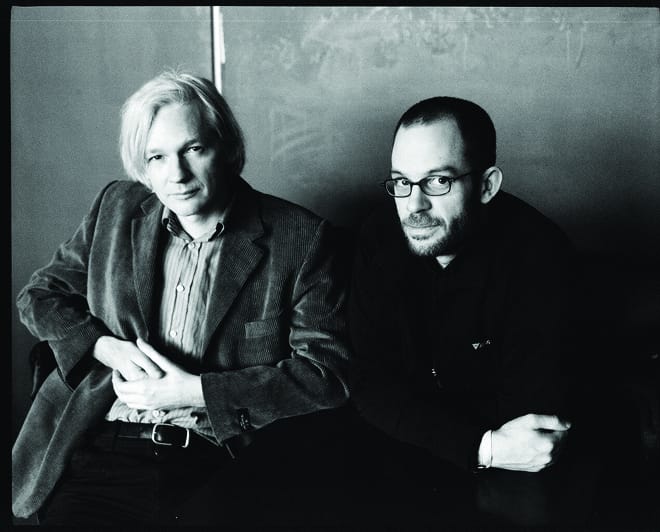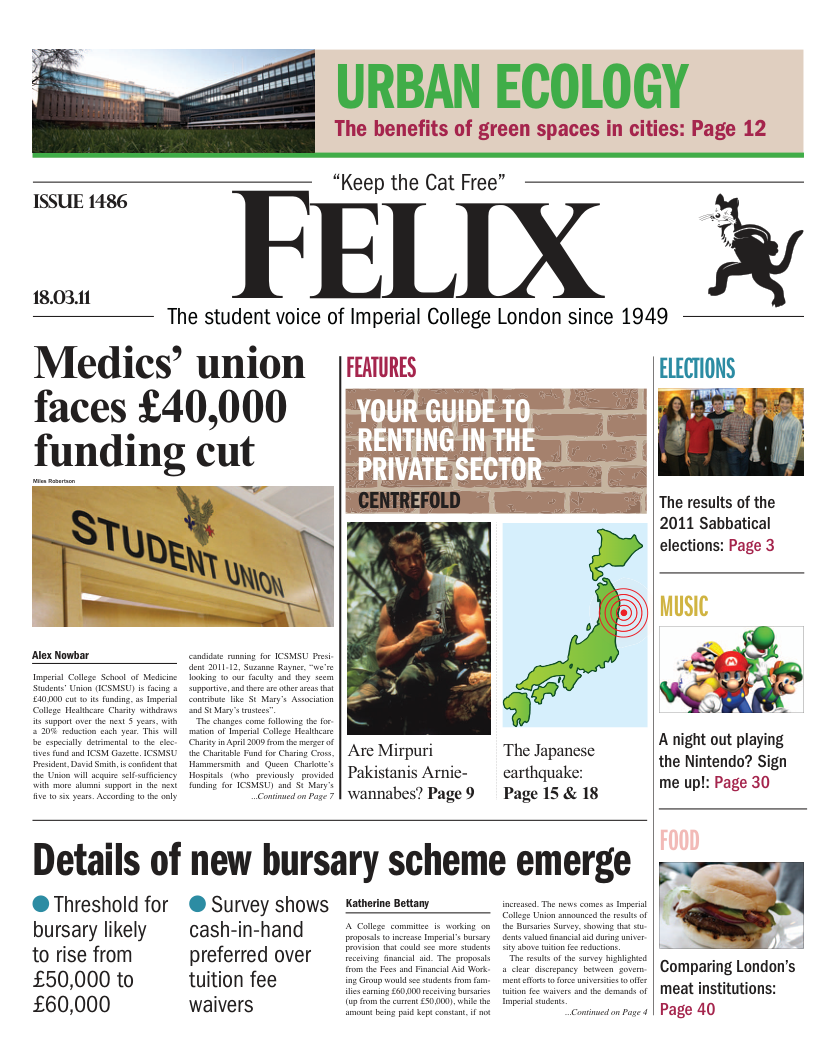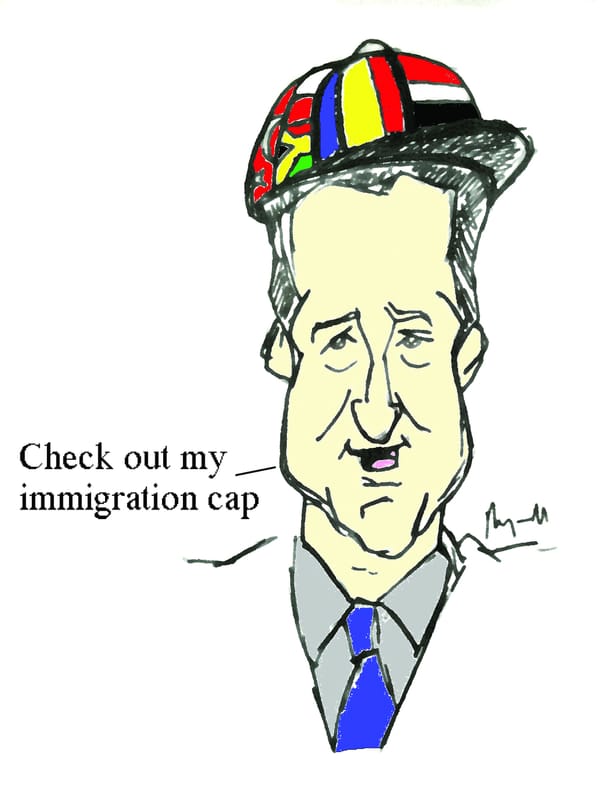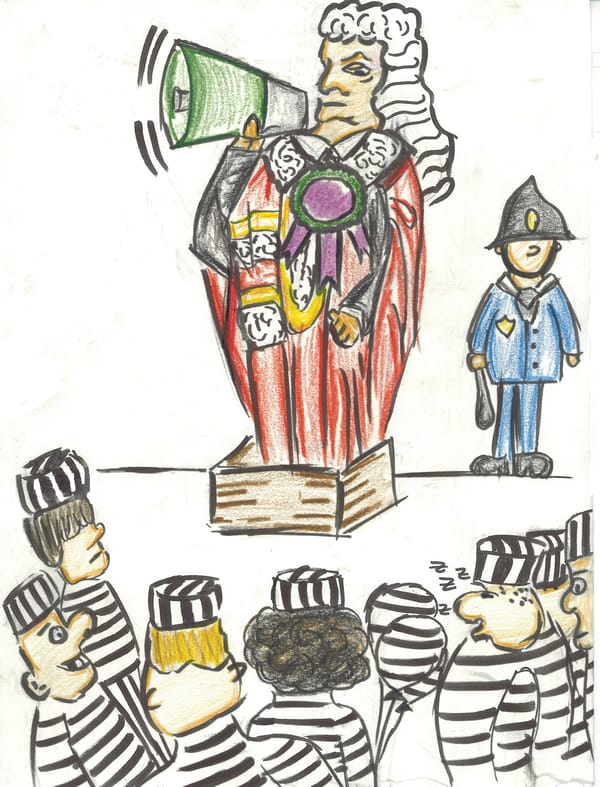Leaking Wikileaks
Domscheit-Berg compares the cult-like organization of Wikileaks to that of the Church of Scientology

Since Wikileaks published their first leak in 2006, it has grown to become one of the most controversial website in the world. Wikileaks lubricated the whistle-blowing cog, resulting in a Cambrian explosion of leaks in the past couple of years via their website. Some leaks are mere objects of amusement, like the publication of the secret handbooks of American university fraternities (frat boys despair as their secret handshakes are no longer secret). Some, like the Collateral Murder video footages and Cablegate, triggered widespread socio-political debates. Wikileaks leads the charge for more transparency but the irony is that the organization itself is rather opaque. That is until last month, when Danieal Domscheit-Berg, the ex-spokesperson and former second-in-command of Wikileaks, published Inside Wikileaks, the account of his time at the “world’s most dangerous website.”
Part memoir, part expose, Inside Wikileaks traces Daniel’s time with the organization from its infancy until September 2010, when Daniel and a group of Wikileaks dissidents left. Daniel first met Julian Assange, the enigmatic founder of Wikileaks at a hacker conference at which he had arranged for Julian to speak. Back then Daniel had a full time job in designing network security at a large American company, and was actively involved in the open source community.
Julian, though unknown publicly during then, was regarded in high esteem by Daniel. The lanky Australian standing at the podium, addressing a dismal turnout of less than twenty, had a reputation in hacking circles. Going by the pseudonym of ‘Mendax’, he was one of the ‘International Subversives’, a trio of high-profile hackers, and the co-author of the hacking cult classic Underground: Hacking, Madness and Obsession on the Electronic Frontier. Julian has his share of battle scars as well, being convicted in Australia for 25 hacking charges, narrowly escaping jail term on account of his disrupted upbringing. The man with the wispy platinum hair was a hacking superstar.
Daniel had his first taste of its power when he dealt with the Bank Julius Baer leak. The documents detailed the Swedish private financial institution’s elaborate tax evasion scheme that involved exploiting a complex subsidiary system and shoring funds on Cayman Islands. Injunctions procured by the company lawyers and furious threats failed to take down Wikileaks, giving Daniel his first taste of victory over Goliath.
Inside Wikileaks is as much a story about Julian Assange as it is about the structural cogs and gears of Wikileaks, as Daniel had the rare chance of spending months with Julian Assange. At the same time of the Julius Baer leak, Julian moved in with Daniel. Julian does not have a permanent address and leads a nomadic lifestyle, relying on the goodwill of supporters for a bed to bunk in, and carries all his worldly possessions in a large rucksack. The two freedom (of information) fighters developed a genuine camaraderie working together on Wikileaks, and Daniel became Julian’s confidante. However their relationship would eventually unravel in the likes of Mark Zuckerberg and Eduardo Saverin during the dramatic founding of Facebook.
Julian Assange is a figure that intrigues as much as he is admired. He styles himself as “founder, philosopher, spokesperson, original coder, organizer, financier and all the rest” of Wikileaks, a lengthy title reminiscent of a British monarch. Julian is an idealist championing for a more open world, but at the same time kept Wikileaks’ finances and administration secret from the public. Daniel accuses him of running a dictatorship at Wikileaks and compares the cult-like organization of Wikileaks to that of the Church of Scientology, of whose secret bible they leaked in 2008. As the leaks got more controversial and attracted more media attention Julian began to become suspicious that Daniel was seeking to replace him.
As the leaks got more controversial and attracted more media attention Julian began to become suspicious that Daniel was seeking to replace him
Julian Assange is known to be on the paranoid end of the spectrum. He attributes his nomadic lifestyle to avoiding surveillance from the enemies he accrued. He also points a finger at a US conspiracy to smear him when he was charged with sexual crimes in Sweden. On the other hand, Julian carries with him a certain charisma. Perhaps his magnetism comes from the fact that he is a rebel with a cause. An Oxford University student who volunteered with Wikileaks likened him to the Pied Piper, attracting followers over the Internet with the maverick tune he plays.
When Daniel first got onboard, the team working on Wikileaks full time consisted of less than five people. Julian role-played multiple characters when it came to external correspondence to give the impression that Wikileaks was a formidable organization.
The state-of-the-art encryption technology Wikileaks employ to protect the anonymity of the whistle-blowers is so sophisticated that only a few programmers in the world could design it but the unnamed architect left together with Daniel and took with him together the codes. They both now work on OpenLeaks, a new whistle-blowing website less focused on sensational leaks targeted at the US.
Inside Wikileaks focuses on the story of Wikileaks rather than the technical side, making it widely accessible. It is generally well paced, and it is spattered with plenty of humourous anecdotes about Julian Assange’s eccentricities like how Daniel psychoanalyzed Julian’s character from the way Julian dances in a club. Following the success of David Fincher’s The Social Network, Dreamworks optioned Inside Wikileaks to be made into a feature film. However, sometimes Daniel’s rapid assault on Julian’s character, down to the most trivial idiosyncrasies, makes one feel that the book is written to get back at Julian – whining that Julian drank all his cocoa powder probably should not have gotten into the book). It is worth a read if you would like a peek into the workings of Wikileaks and spend a day with Julian Assange. Maybe when Julian Assange publishes his autobiography late this year, we would be able to hear the other side of the story and hopefully more hilarious eccentricities of Julian.









